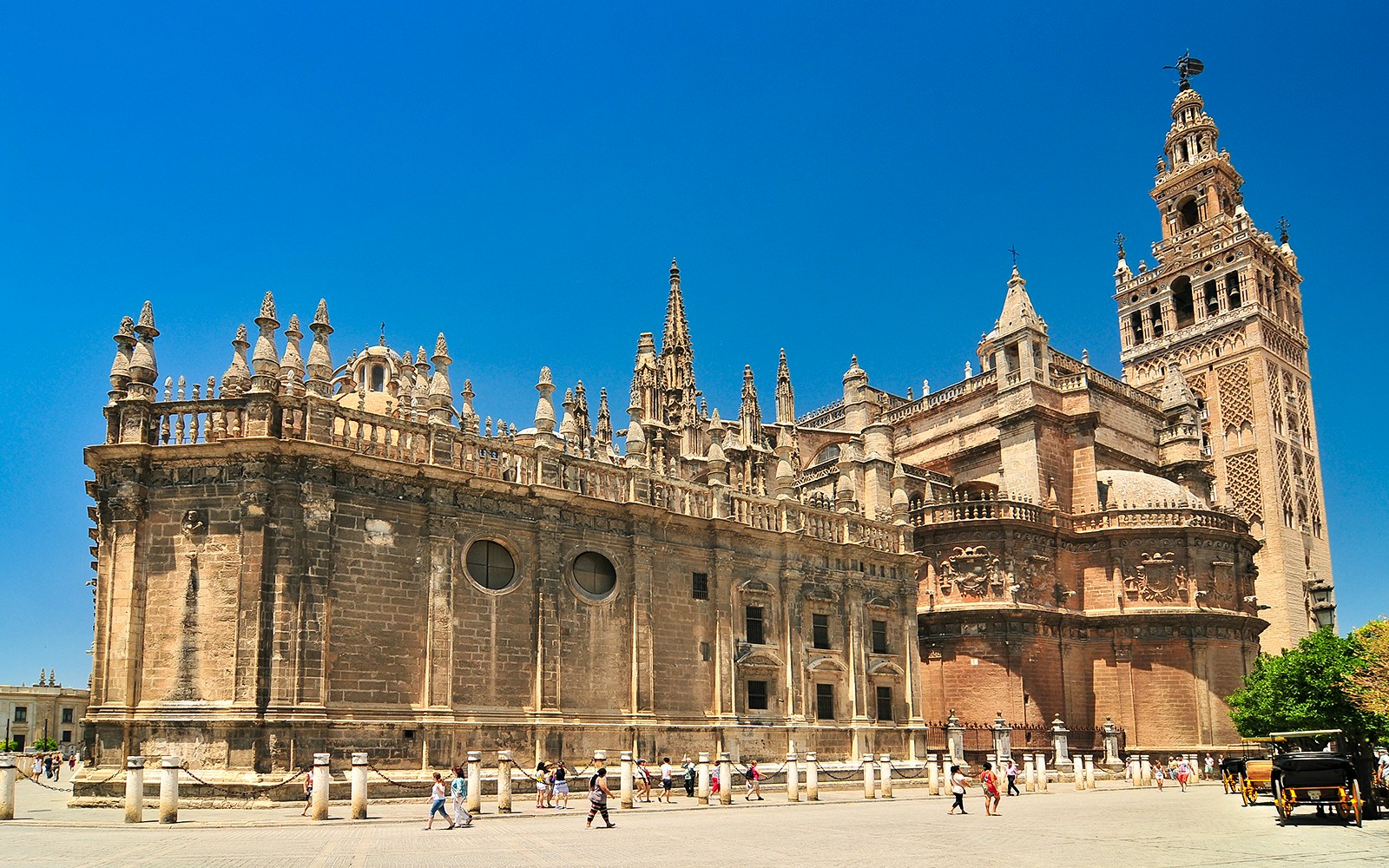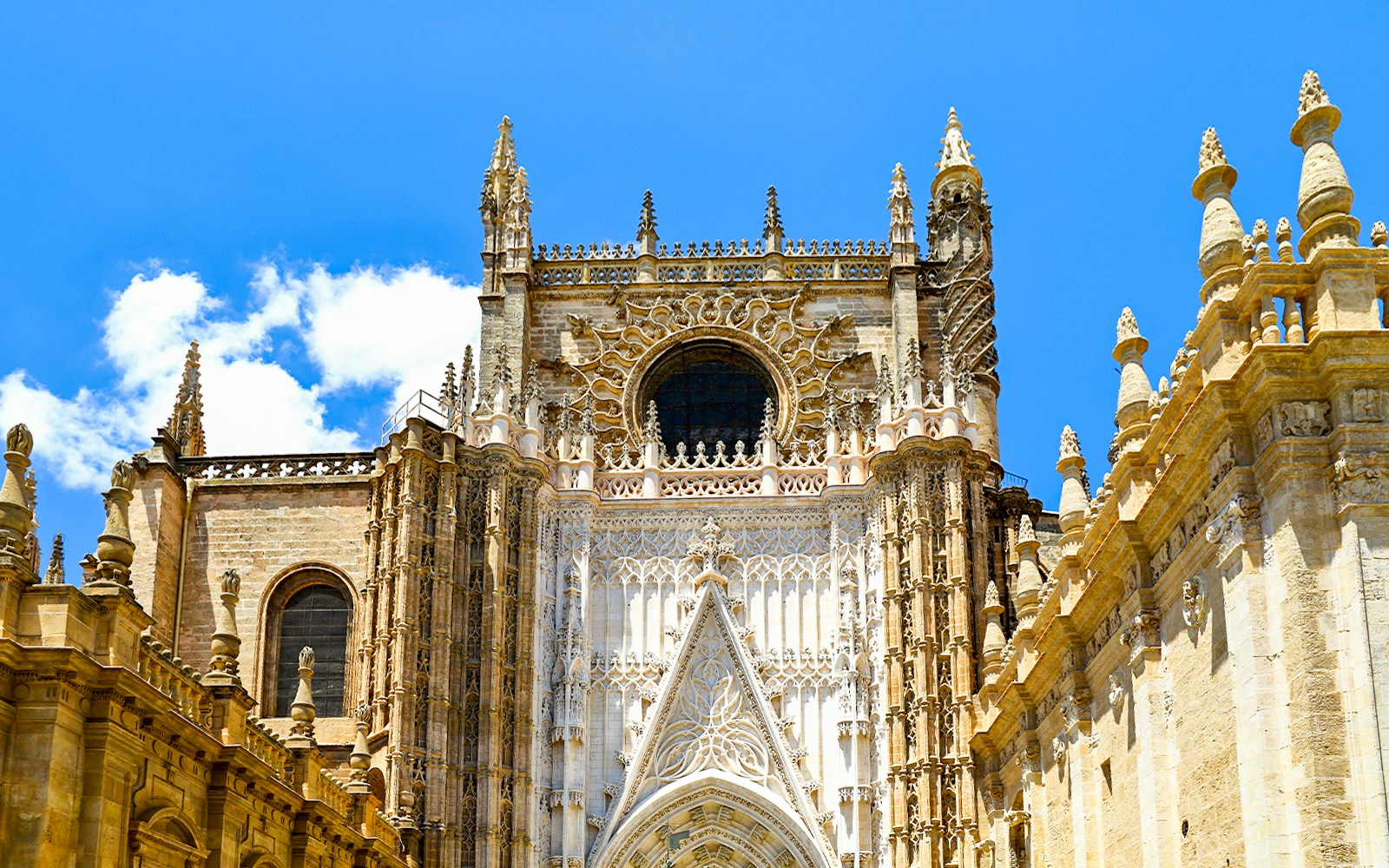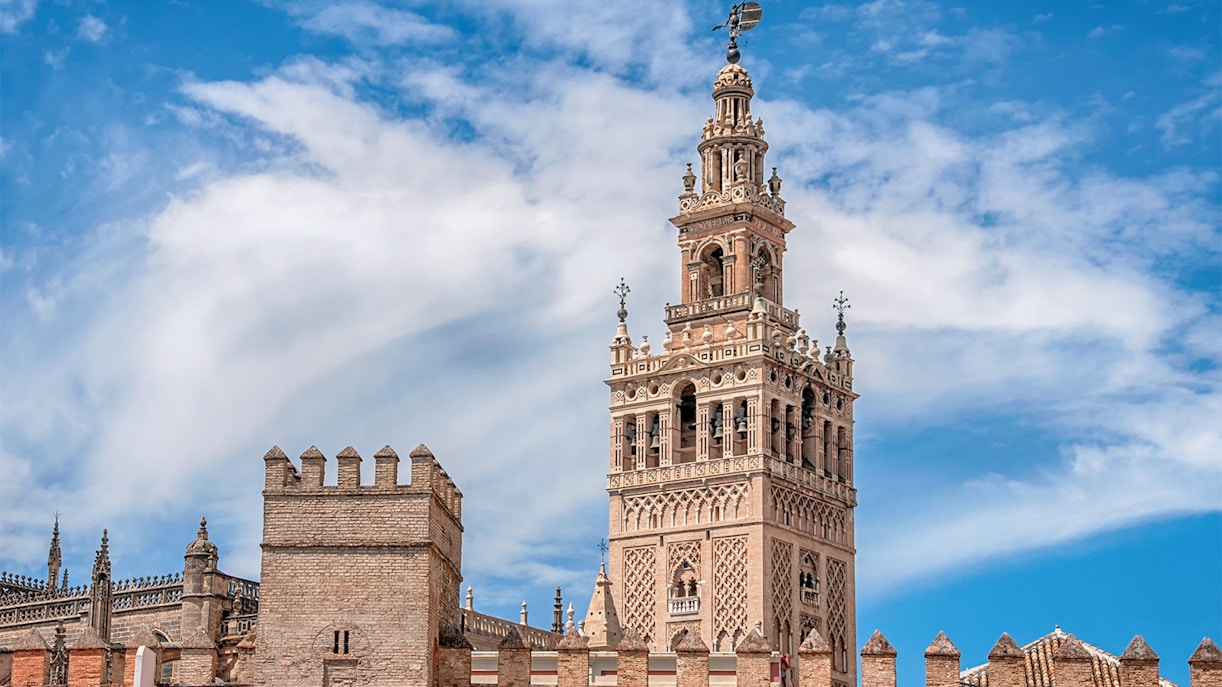One of the cathedral’s standout features is the La Giralda—its iconic bell tower, originally built in the 12th century as the minaret of the Great Mosque of Seville. Standing at 104 meters tall, the tower is a stunning blend of Almohad Moorish architecture and Renaissance additions made after the Reconquista.
What makes the Giralda unique is its internal ramp system—34 gently sloping ramps instead of stairs, which allowed muezzins to ascend on horseback to issue the call to prayer. Today, visitors climb the same ramps to reach panoramic viewing platforms with breathtaking views over the city’s rooftops, the Alcázar, and the Guadalquivir River.
Explore the La Giralda




